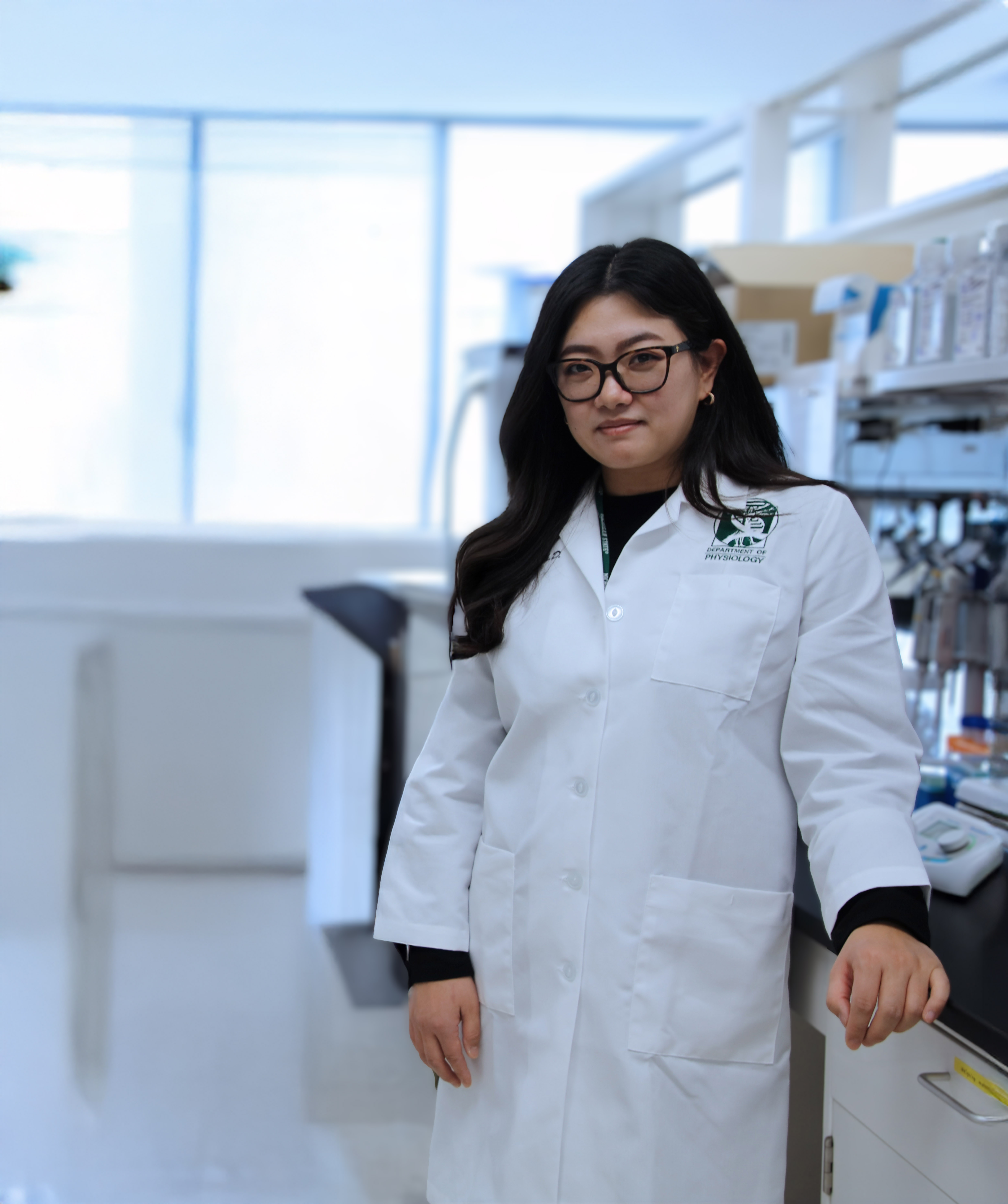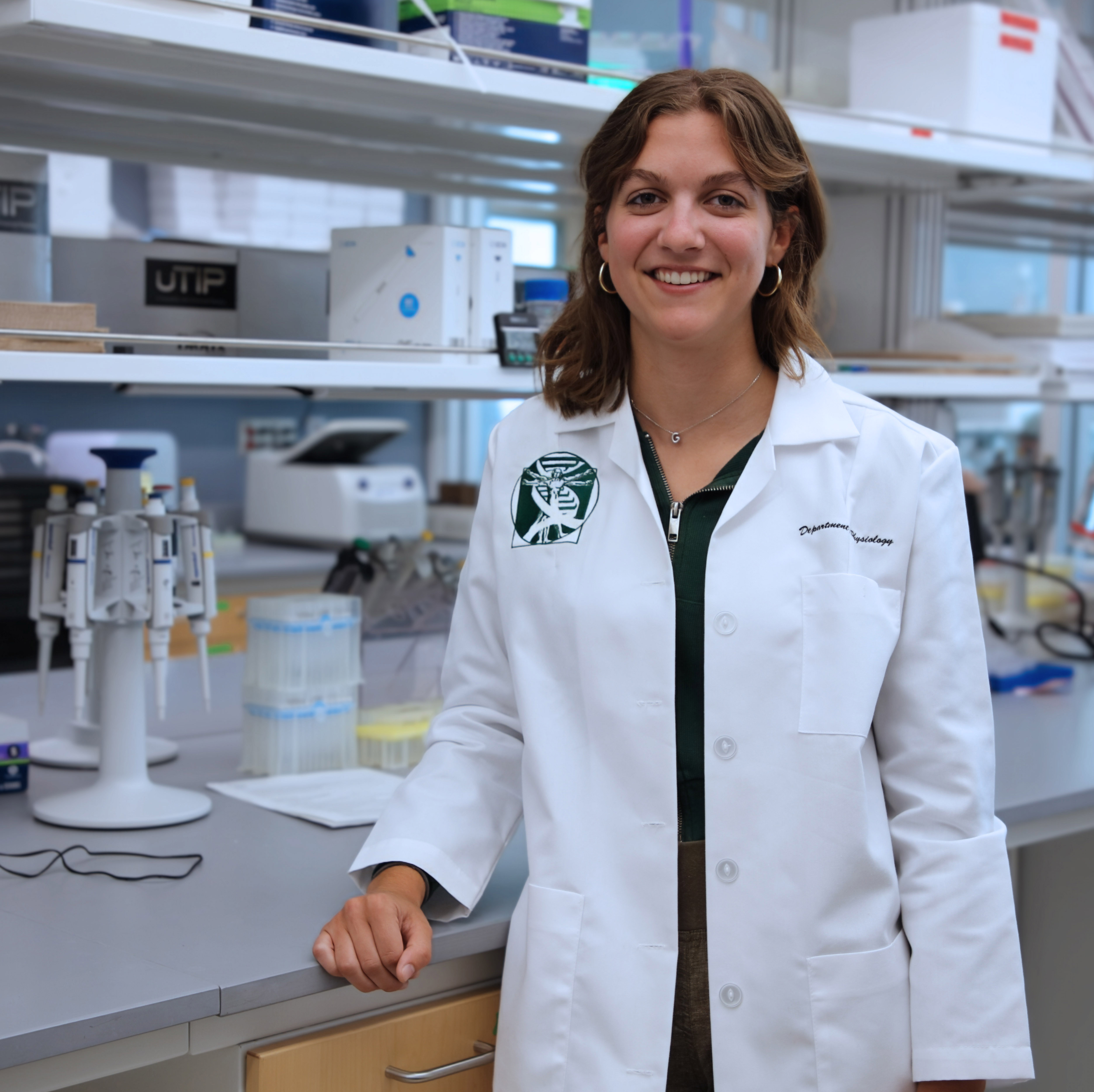Crystal Clear Vision: Graduate student’s research reveals early diabetic retinopathy biomarkers
Article Highlights
- The study was done by Dorweiler, who's the lead author on the published paper, and a team of researchers from MSU and other universities.
- It is the first study to find the presence of cholesterol crystals in the retina under diabetic conditions.
- This discovery could revolutionize current treaments of diabetic retinopathy, a condition that leads to progressive loss of vision.
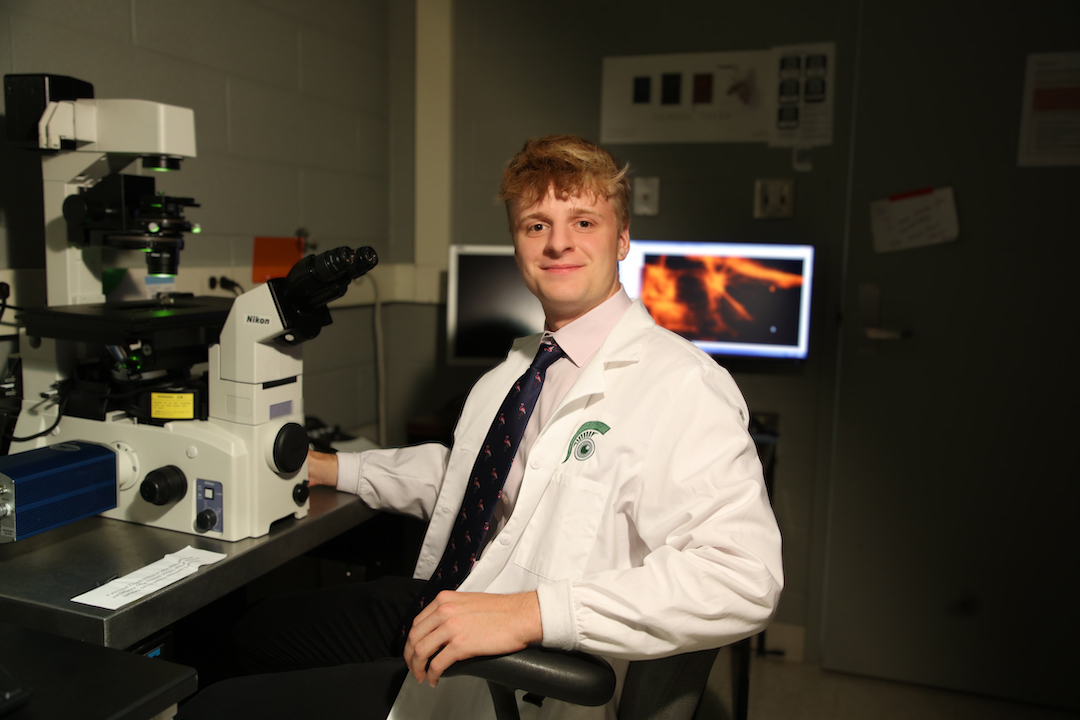
Tim Dorweiler started on the study in 2019 as an undergraduate researcher. Other contributors to the published paper include researchers from the University of Alabama, Birmingham; Case Western Reserve University; Western University of Health Sciences and George Abela from MSU. Credit: T. Lee
The first time Tim Dorweiler met Julia Busik was during his junior year as an exchange student at Michigan State University. Immediately, the German native knew that the Department of Physiology professor was the mentor he wanted to work with when he started his Ph.D.
“She was the most genuine PI that I ever met,” said Dorweiler who is a third-year Ph.D. student in the Molecular, Cellular and Integrative Physiology, or MCIP, Graduate Program at the Department of Physiology. “She always strives to open every possibility for me and guides me to take advantage and make the most out of every opportunity.”
So far, it’s been a rewarding experience.
Recently, Dorweiler’s research on diabetic retinopathy under the mentorship of principal investigator Busik and in collaboration with other researchers from MSU and other universities, was published in Diabetologia, the official journal of the European Association for the Study of Diabetes. An image taken by Dorweiler, who’s the lead author on the paper, was used for the cover of the September issue. The study was funded by the National Eye Institute.
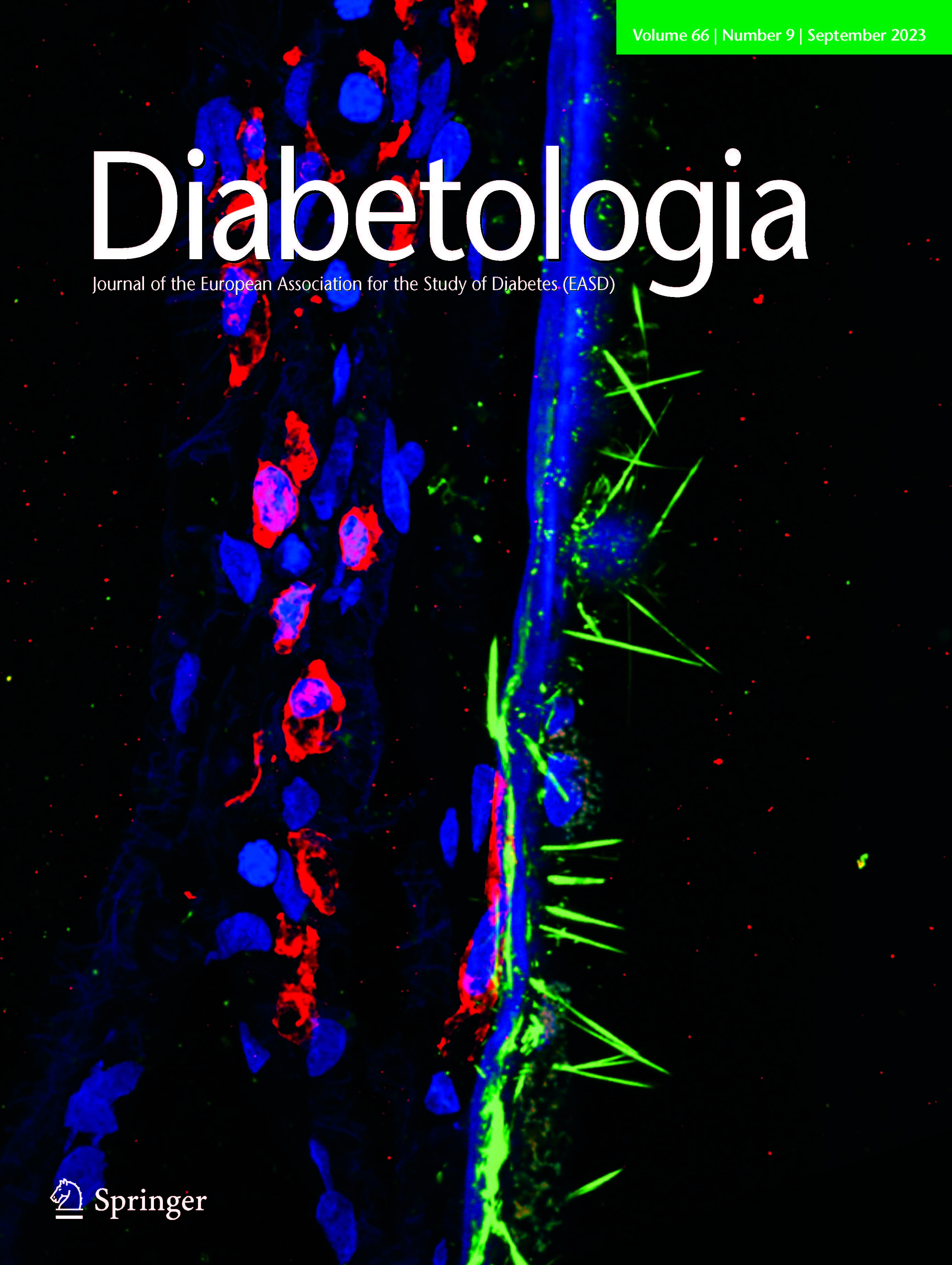
The September 2023 issue of the scientific journal Diabetologia where the study is published, features an image capture by Dorweiler of cholesterol crystals (seen in green) in the bruch’s membrane of a human diabetic retina. Credit: Tim F. Dorweiler, Springer, & Diabetologia.
The study’s identification of the crystallization of cholesterol build-up in the retina as a result of diabetes, can serve as early biomarkers for diabetic retinopathy, a condition that insidiously leads to progressive loss of vision. Retinopathy is the leading cause of preventable blindness for Type 1 and Type 2 diabetes. This discovery could revolutionize the landscape of diagnosis and treatment and empowers individuals with knowledge and proactive choices said Dorweiler.
“A large amount of people don’t know that they are diabetic until they are diagnosed with retinopathy,” said Dorweiler who is expected to graduate from the MCIP Ph.D. program in May of 2024. “This is important because right now retinopathy is usually diagnosed at the clinical stage when treatment is unlikely able to cure it.”
This research study had its start during Dorweiler’s undergraduate studies. His inherent fascination for the intricate workings of the human body centered around the vascular system, a complex network of blood vessels that sustains every cell and heartbeat. The notion that almost every cell’s survival was intertwined with a blood vessel resonated with Dorweiler. His captivation of this orchestration, particularly in the context of diseases like diabetic retinopathy, stood as a profound issue of understanding and treatment.
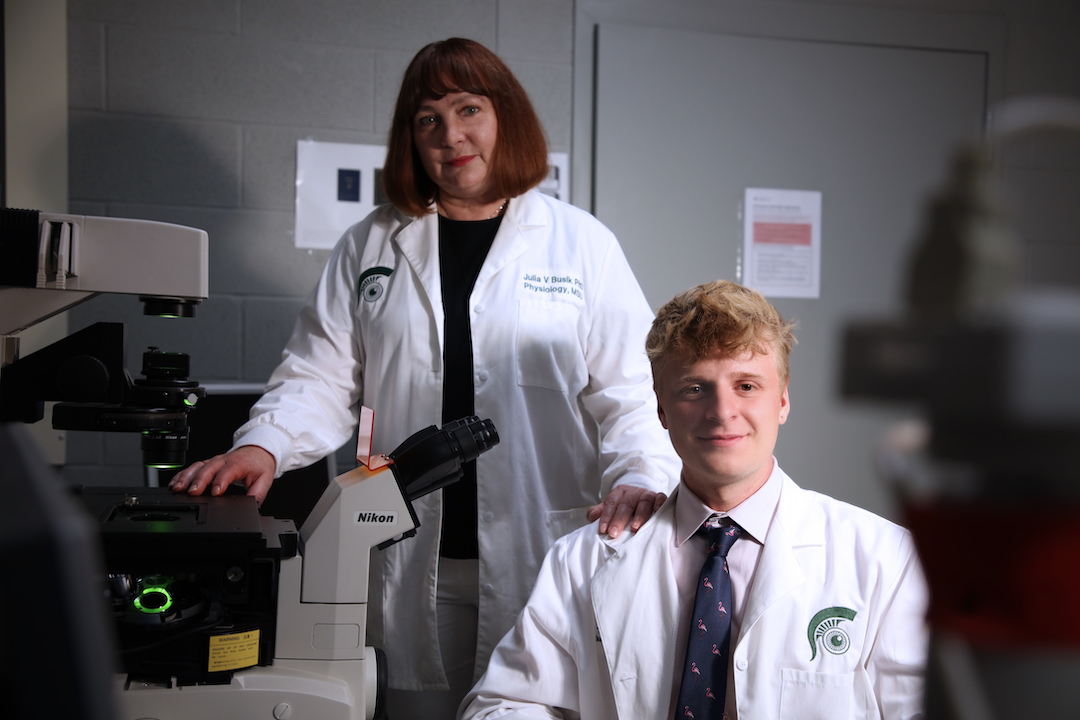
Tim Dorweiler first worked in Julia Busik’s lab when he came to MSU from Germany through the Biology International PLUS Program at MSU and the University of Duesseldorf. “To date, she is the most supportive and challenging mentor with the most down to earth attitude,” Dorweiler said. Credit: T. Lee
“This publication was groundbreaking for the retinal research community and gained a lot of attention and recognition,” said Dorweiler adding that the study is the first to find the presence of cholesterol crystals in the retina under diabetic conditions. “Working on this important topic with leaders in the field of retinal disease taught me many scientific skills and increased my reputation as an early-career researcher significantly.”
As he envisions the future, Dorweiler aspires to become a leading figure in vascular research. He aims to translate his knowledge into practical applications, collaborating with experts across diverse fields to decode the fundamental basis of vascular diseases like diabetic retinopathy.
“It was scary to see these large and sharp crystals perforating our retina,” said Dorweiler whose received various post-doctoral research opportunities from nationally and internationally renowned institutional laboratories. “The eye does not only see – it’s essential for our contribution to society. It allows us to fall in love or defend ourselves from a threat. Sight is essential to human life and I’m proud to help preserve vision in this world.”
To read the published research study in Diabetologia, click here!
By: Tyler Lee
Banner image: An image captured by graduate student Tim Dorweiler shows cholesterol crystals (seen in green) in the bruch’s membrane of a human diabetic retina. The image was selected as the cover image for the September issue of the scientific journal Diabetologia. Credit: Tim F. Dorweiler, Springer, & Diabetologia.

